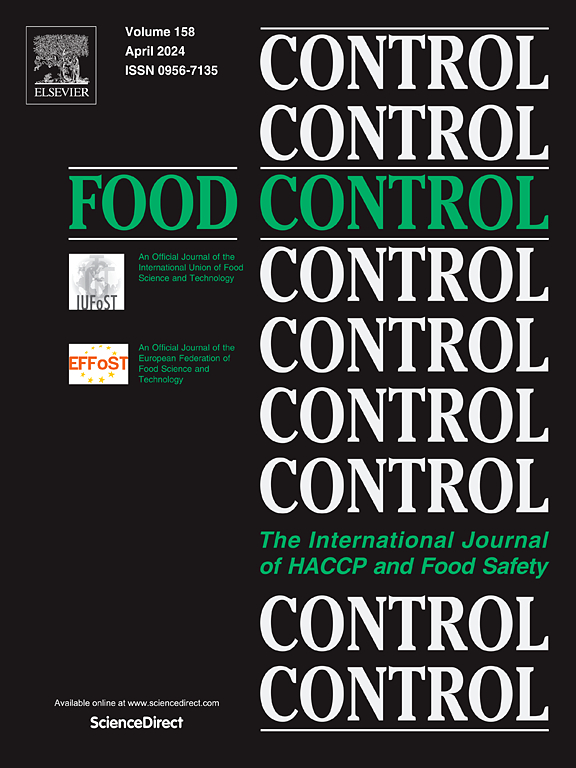A preliminary survey on the presence of ciguatoxins (CTXs) in fishery products sold in Italy: An initial step towards the proper assessment of an emerging EU risk
IF 5.6
1区 农林科学
Q1 FOOD SCIENCE & TECHNOLOGY
引用次数: 0
Abstract
Ciguatera poisoning is a food-borne disease related to the consumption of finfish from areas endemic for ciguatoxins (CTXs). Mislabeling of fishery products can enhance consumer's exposure to this hazard by hiding the presence of CTXs vector species. In this study, we identified the main CTXs vector fish families (CVF) and the FAO areas at CTXs risk. Market products from CVF and sourced from CTXs risk areas were collected in Italy, molecularly authenticated to detect potential mislabeling cases, and then analysed for CTXs using a two-tier detection method (cell-based assay and mass spectrometry). Additionally, the official lists of seafood trade names (OL) from EU countries associated with ciguatera poisoning (CP) outbreaks linked to imported products were evaluated to assess a possible correlation between market species and CP risk. The Italian OL was also included. A total of 24 CVF and four FAO areas were selected. Overall, 51 market products were collected. The availability of CVF products from FAO areas at CTXs risk was limited in the Italian market. Molecular authentication revealed 16 cases of mislabeling (31.4%) in products from Sparidae, Lethrinidae and Epinephelidae. All samples analysed tested negative for CTXs. The OL analysis highlighted that a revision to improve correspondence between trade names and species would be beneficial also in the light of a proper risk assessment. Although no CP outbreaks have been reported in Italy by far, and no CTXs were detected in this study, the implementation of targeted programs to prevent and manage CP risk should be considered. This is particularly important because i) mislabeling remains prevalent in products imported to Italy, and ii) future indigenous outbreaks due to climate changes should be anticipated.
求助全文
约1分钟内获得全文
求助全文
来源期刊

Food Control
工程技术-食品科技
CiteScore
12.20
自引率
6.70%
发文量
758
审稿时长
33 days
期刊介绍:
Food Control is an international journal that provides essential information for those involved in food safety and process control.
Food Control covers the below areas that relate to food process control or to food safety of human foods:
• Microbial food safety and antimicrobial systems
• Mycotoxins
• Hazard analysis, HACCP and food safety objectives
• Risk assessment, including microbial and chemical hazards
• Quality assurance
• Good manufacturing practices
• Food process systems design and control
• Food Packaging technology and materials in contact with foods
• Rapid methods of analysis and detection, including sensor technology
• Codes of practice, legislation and international harmonization
• Consumer issues
• Education, training and research needs.
The scope of Food Control is comprehensive and includes original research papers, authoritative reviews, short communications, comment articles that report on new developments in food control, and position papers.
 求助内容:
求助内容: 应助结果提醒方式:
应助结果提醒方式:


